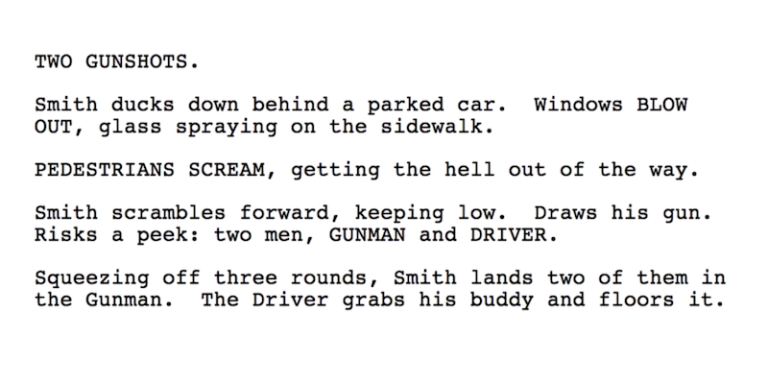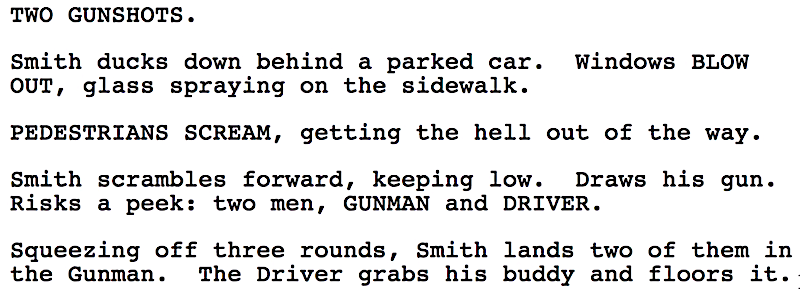Sign up for the
TSL Newsletter
and get $50 off Final Draft 12
By Ken Miyamoto · July 8, 2019

What does Hollywood Screenwriter John August suggest for screenwriters that want to write better action?
Welcome to our ongoing Learning from the Masters and Industry Insiders series where we seek out and feature excellent videos, interviews, and discussions of the art, craft, and business of screenwriting and pull the best words of wisdom, writing tips, and screenwriting advice.
John August is the screenwriter behind such films as The Nines, Big Fish, Go, Charlie and the Chocolate Factory, and Corpse Bride.
Download the script for Big Fish here for free.
Here we feature John August‘s Writing Better Action video as he teaches screenwriters how to write better action beats within their screenplays — followed by some of our own elaborations.
August uses this following action beat sample as an example to work from.

“There’s nothing technically wrong here…everything that is capitalized is supposed to be capitalized. But it doesn’t read very well. It doesn’t actually feel very much like an action beat.”
August takes us through some reasoning and tips to make this action writing better.
“As screenwriting has evolved, the goal on the page is to make it feel like what the movie is going to feel like. You want your action beats to feel like action.”
The read of your script is important. It has to read in cinematic fashion, allowing the script reader to be able to experience the read as if they are watching the movie unfold before their eyes.
Download the script for GO here for free.
The first key to offering a cinematic read is deleting unnecessary words. He points out that the words “there are” before two gunshots are unnecessary.
When he applies this to the original script sample, we get a more simplified version of the first moments within the scene.

Download the script for THE NINES here for free.
The next two lines of action display what is going on. But the action isn’t written in an exciting way. With some adjustments, August offers a much more engaging version of those first two lines of action beats.
He has injected the specific action visual of Smith ducking behind a car, as well as a more exciting visual of the windows being blown out from the car he’s behind. This is more how we would see the action sequence within a movie unfold.

But the scene still needs more.
To write cinematically, you have to offer a setting and showcase some of the background to give us a visual context.
You never have to go into any major detail. You shouldn’t. Sometimes it’s just one additional line of scene description that establish the context of the setting and background.
August injected some pedestrians reacting to the chaos.

August wants to address some logic. The hero doesn’t seem to know who he is shooting at. He just takes out his gun and shoots back. There’s a better version.
So he introduces some parallel action, followed by an action he takes to see who is shooting at him. And because this is explained, the script reader understands that as well.

The parallel action is applied through introducing the fragments of draws his gun and risks a peak. This imagery is all part of one action beat. In screenplays, especially in action writing, fragments are welcome.
He then alters the action beat of Smith shooting, giving it some more cinematic flare.
And finally, this is the rewritten action sequence.

Watch August’s full breakdown as he rewrites the action beats…
For all the latest from The Script Lab, be sure to follow us on Twitter, Facebook, and Instagram.
And become a member of TSL 360 to enjoy the LARGEST screenwriting education content library, featuring masterclasses, deep-dive interviews, and lectures from Academy Award-winning screenwriters, TV show-runners, producers, literary managers, agents, studio executives, and leading educators – all in one place.